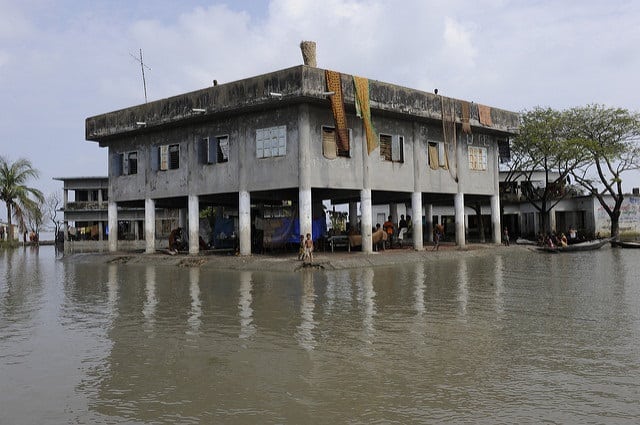 Credit: UK Department of International Development
Credit: UK Department of International Development
Washed Away: Climate Change, Migration, and Monsoons in South Asia
The monsoon season has begun in South Asia. This month, devastating floods have battered both India and Bangladesh, affecting over 1 million people in India and 11,000 Rohingya refugees in Bangladesh. While every year monsoons drench the region, the monsoons have become increasingly extreme, both weakening and occurring more intensely and sporadically. Climate change will perpetuate this trend far into the future. Such changes will impact the stability of the entire region.
Predicting the monsoon is critical for community preparedness. Unfortunately, most South Asian countries lack the technological capacity to fully predict and prepare for the monsoon during average years. Some of the challenge is due to the variety of environments across the region, with elevation ranging from 0 meters to over 5,500 meters. Another challenge is growing urbanization and lack of urban planning. For example, Mumbai is without sophisticated weather forecasting and has an inefficient water drainage system for the already low-lying neighborhoods. Increasing urbanization has added to the problem as more people strain the existing systems.
The inability to predict and prepare for monsoons makes the region vulnerable both economically and socially. Sudden deluges of rain disrupt communities, causing everything from train delays to loss of life. This inhibits economic activity and undermines the continued growth of cities. Entire communities may need to relocate as monsoons devastate the same vulnerable areas year after year. Conversely, weak monsoons threaten the livelihood of those dependent on agriculture. The monsoons are the lifeblood of agriculture in South Asia, providing enough rain to support the large agricultural sector. That leaves the country highly dependent on “normal” monsoons. Climate change is shifting the normal. Recent studies have found that climate change and resulting rising temperatures will lead to weakened and delayed monsoons. Such a change may have unanticipated consequences in South Asia. Crop failure can force communities off their land and into the already cramped urban environments. Refugees from external conflict zones add to the strain on state institutions. Into the future, the impacts of climate change will only multiply these effects.
How countries respond to the growing pressure both from climate change and changing human populations will determine how the region develops. Within Bangladesh, the handling of the Rohingya refugee crisis shows how future situations may play out. Bangladesh is home to some 700,000 Rohingya refugees fleeing persecution in Myanmar. Without internal resources to spare, the country has relied on international aid. So far they have been able to keep pace with the huge number of refugees but the monsoons threaten the communities with landslides, flooding and water contamination. Up to 200,000 refugees live in areas vulnerable to landslides or floods, and water contamination could have a much broader impact. Large, hopeless populations are a prime target for those looking to recruit the next generation of extremists. Into the future, Bangladesh will face both extreme monsoons and sea level rise, creating over 30 million refugees. The country is not prepared for the expected surge.
The crisis in Bangladesh should serve as a warning to the rest of the region. Climate change will only add to the movement of people which may strain the receiving communities and the institutions they rely on. If countries fail to prepare for the inevitable influx, they risk further instability which can open the door for other nefarious actors.





